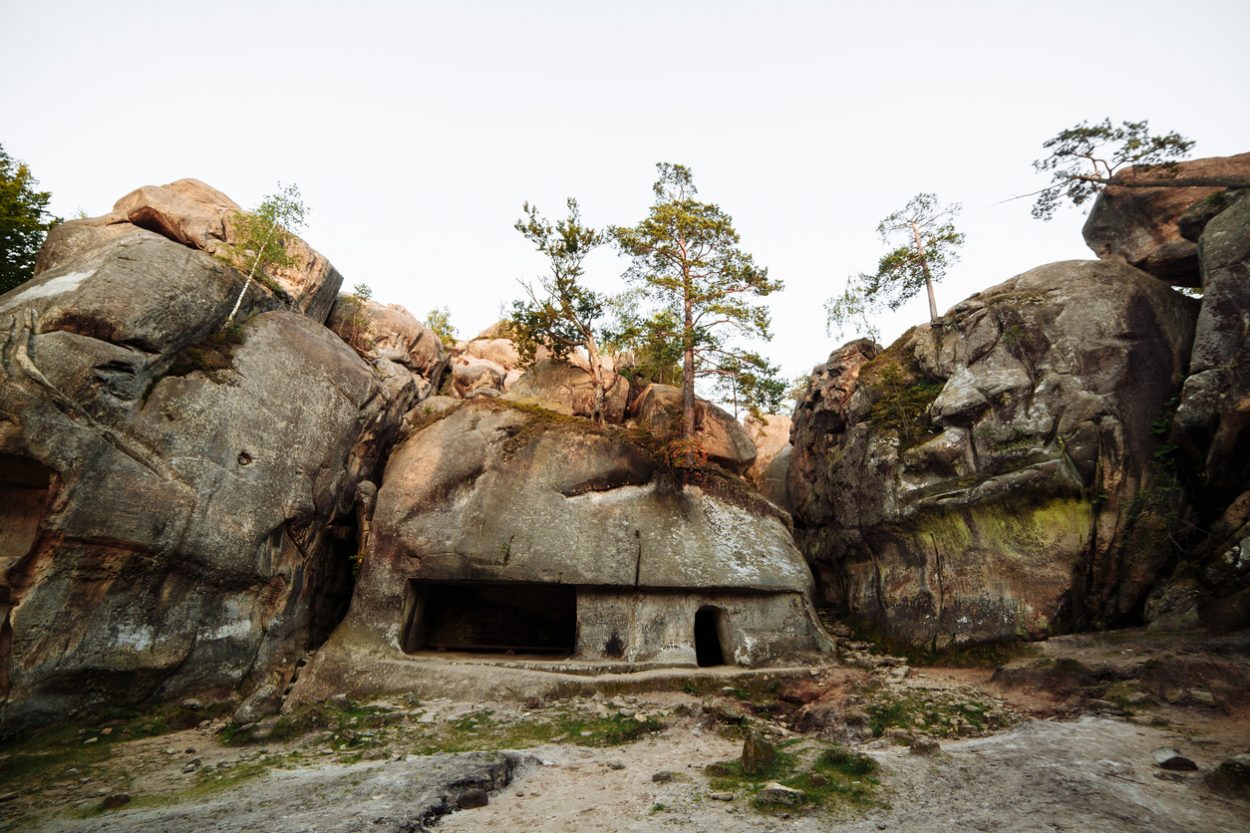The Dovbush Rocks is a group of natural and man-made structures, carved out of rock in the Skolivski Beskydy National Park in the Skole Raion of Ukraine.
The geology of the rock formations is composed of massive grey sandstones corresponding to the Yamna series from the Upper Paleocene, a geological epoch that lasted from about 66 to 56 million years ago.
The rocks are named for Oleksa Dovbush, a famous 18th century Opryshky outlaw and legendary folk hero who robbed from the rich to help serfs and the poorer peasantry.
It is believed that the Opryshky insurgency movement may have used the rocks as a shelter to launch raids against wealthy estates, tax farmers and merchants within the Carpathian Mountains, although any association to Oleksa Dovbush is likely a modern invention.

The Dovbush Rocks stretch for up to 1km in length, consisting of natural formations that appear to form the shape of ‘medieval towers’, many of which are uniquely named.
One particular concentration of rocks is referred to as ‘the castle’, which contains numerous rock-cut niches and caves, believed to be the remains of a small Old Rus’ monastery-skete for members of the monastic community in Eastern Christianity.
The caves would have served as the living quarters with a centralised chapel, protected from the elements and banditry in relative seclusion deep in the forests of the southern slope of Mount Sokolov.

Evidence of some man-made fortifications such as a defensive moat and pits on which a fence once stood, and a system for water storage suggests that ‘the castle’ was literally used at some point as a stone fortress. Due to a lack or archaeological research, it is speculated that the fortifications may either date from either the Mongol-Tatar invasion in the 13th century, or the Opryshky period in the 17th to 18th century.
Header Image Credit : Andrii Medvediuk – Shutterstock





